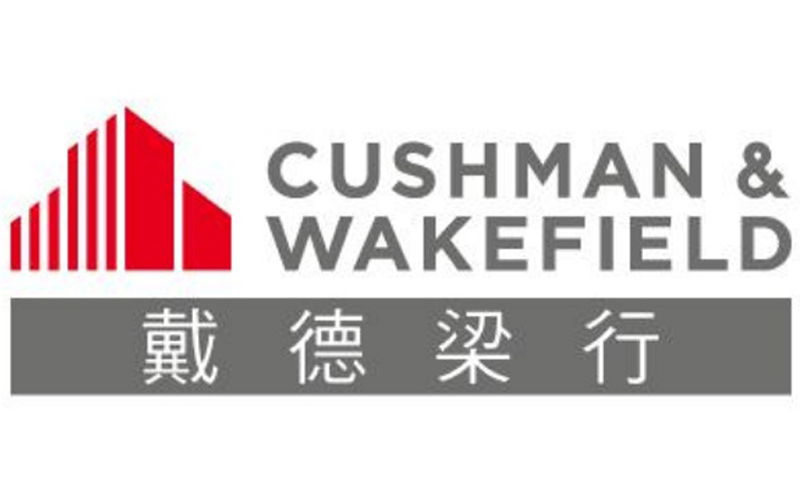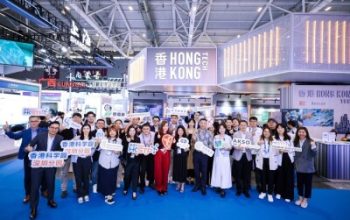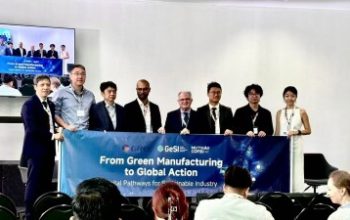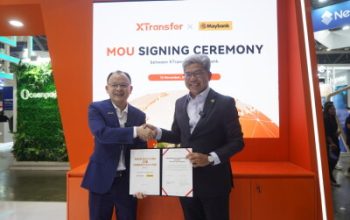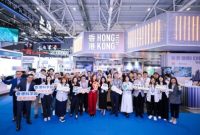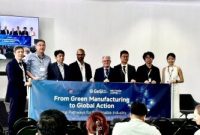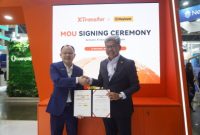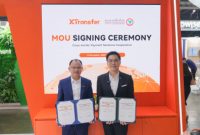HONG KONG SAR – 24 June 2021 – Cushman & Wakefield, a leading global real estate services firm, and the U.S. Green Building Council (USGBC) jointly released the report – Carbon Neutrality – Shifting to neutral to drive real estate sustainability.
China’s 14th Five Year Plan (FYP) looks set to build upon the environmental sustainability initiatives China has undertaken in the past. Strengthened climate and air pollution control measures will ensure the road ahead in the region will be healthier and cleaner as the country moves to carbon neutrality by 2060.Over the years, China’s economic growth considerably amplified the energy use by the built environment in the country. In order to reduce the amount of energy used by, and carbon emissions from, buildings in China, it will be important to take the next step and go carbon neutral.
Jing Wang, Director, North Asia, U.S. Green Building Council & Green Business Certification Inc. said, “Green buildings is not only a practical solution for the real estate industry to address climate change, responding to growing attentions from policy makers and investors. With buildings contributing to 40% of global carbon emissions, green buildings also play an essential role for the industry and the country to achieve carbon neutral goals. The development of LEED green buildings in China recent years also testifies this trend – projects participating in LEED are much more diversified, from new buildings to existing buildings, from grade A office buildings to entire portfolios.”.
A whole lifecycle carbon reduction plan – a road map for real estate investors/developers/ landlords in china
Through best-practice design and choice of materials used, efficient buildings with low energy and water use can be visualised and built. Energy demand can be lessened by augmenting the building volume and positioning, by means of vigilant design of the building envelope and by stipulating energy/water efficient building services and controls.
Looking at whole building lifecycle carbon, the amount of energy and water used during a building’s lifespan needs to be considered. When ruminating on this, many aspects about a building project have to be assessed. Before building, operating and re-using/dismantling a building, it will be important to execute on the right whole building lifecycle approach and to do this, the following elements will also need to be taken into consideration: carbon offsetting; carbon avoidance; embodied carbon, and operational carbon.
Carbon offsetting
Carbon offsetting can allow real estate investors, developers and landlords in China to construct and operate a real estate project in a location without that particular project being necessarily green in any way. In this case, carbon offsets (certificates that represent the reduction of one metric ton of carbon dioxide emissions) can be bought by the investor, developer or landlord to fund a green carbon offset project. What’s more, this green carbon offset project could be in a completely different part of the country. By purchasing, carbon offset certificates, the GHG emission impact on the environment from an investor’s, developer’s or landlord’s own project can be lessened. Moreover, if emissions for the real estate project are actually impossible to reduce, the investor, developer or landlord can use offsetting funds to help reduce emissions elsewhere in another location.
Carbon avoidance
For real estate investors, developers and landlords, carbon avoidance is about: building nothing; building less; building clever; building efficiently; operating clever, and/or; operating efficiently.
Embodied carbon
Embodied carbon relates to emissions linked with a number of activities associated with a building’s lifecycle, such as the extraction of raw materials, the transportation of raw materials to the factory, product manufacturing, the transportation of products to the site, building construction, use and maintenance of the building, building refurbishment/building demolition, the transportation of waste materials from the site and the storing the waste material at a landfill.
Operational carbon
Operational carbon is more or less the collective carbon dioxide emissions produced for a building to run throughout its operational lifecycle.
Energy efficiency measures and systems which concern the heating/cooling equilibrium of buildings can be challenging to augment. This is because the amount of yearly carbon emissions from space heating and cooling are often quite analogous. Having said this, there are a number of energy efficiency concepts, measures and systems which commercial building investors, developers and landlords in China can employ.
Other considerations and what’s in it for real estate investors, developers and landlords
Alton Wong, Senior Director , Head of Advisory Services, Valuation and Advisory Services, Greater China, Co-head of Smart and Green Services, Greater China, Cushman & Wakefield, said: ” The COVID-19 pandemic has made commercial real estate investors, developers and landlords in China increasingly aware of the importance of health, safety, well-being and environmental sustainability to buildings. The further promotion of environmental sustainability by various government agencies, and investment capital driven by the ESG (Environmental, Social and Governance) principle and/or environmental sustainability, such as green financing capital, have also attracted great public attention. ” Given, the ‘green’ development momentum of late, these drivers are increasingly going to become key influencers in the development and operation decision making of commercial building investors, developers and landlords in China.
Selected criteria behind ESG
Hong Kong Market
For Hong Kong, in 2019, the Hong Kong Stock Exchange began to gradually tighten its environmental, social, and governance information disclosure policies. All issuers now not only need to publish ESG reports, but they must also comply with stricter reporting guidelines. This will have a profound impact on mainland and Hong Kong developers listed on the Hong Kong Stock Exchange because they must strengthen their efforts in green building and sustainable development to avoid falling behind their peers.
More and more real estate developers and real estate fund companies have joined Global Real Estate Sustainability Benchmark (GRESB). Companies operating in China, like Swire Properties, New World Development, China Resources Group, Sino-Ocean Group, and CITIC Capital have all been participating in the assessment for many years. Green building in China is still continually developing and growing and alongside this development and growth, GRESB will be used more in the country for measuring the sustainability performance of real estate companies and real estate funds.
Shaun Brodie, Head of Occupier Research Greater China, Cushman & Wakefield, concluded: “Environmentally friendly commercial buildings often enjoy higher rentals and augmented market pricing. They are also often more resilient to any market downturns as they are still the location of choice for many occupiers. For the real estate around the world, including property in China, to play its part in reducing carbon emissions and natural resource usage in the future, carbon offsetting, carbon avoidance, embodied carbon and operational carbon must all be considered to approach decarbonisation holistically and create a world that is more sustainable.”
About Cushman & Wakefield
Cushman & Wakefield (NYSE: CWK) is a leading global real estate services firm that delivers exceptional value for real estate occupiers and owners. Cushman & Wakefield is among the largest real estate services firms with approximately 50,000 employees in over 400 offices and 60 countries. Across Greater China, 22 offices are servicing the local market. The company won four of the top awards in the Euromoney Survey 2017, 2018 and 2020 in the categories of Overall, Agency Letting/Sales, Valuation and Research in China. In 2020, the firm had revenue of $7.8 billion across core services of property, facilities and project management, leasing, capital markets, valuation and other services.


